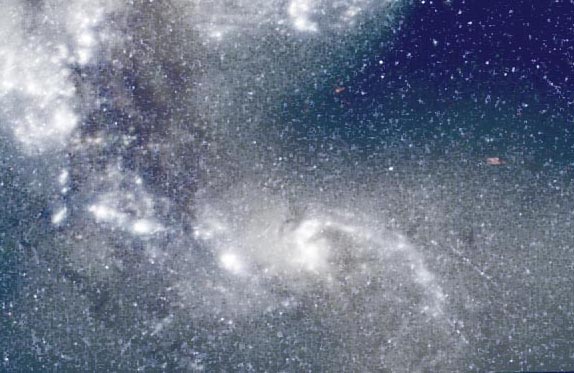Explanation: Do star clusters form when galaxies collide? Quite possibly, according to Hubble Space Telescope observations of the "Antennae", two galaxies thought to be in the early stages of a collision. As NGC 4038 and NGC 4039 slowly merge, the combined gravity of each pulls the other apart, huge gas clouds collide, and new bright stars and dark dust are dispersed. Many blue knots of stars appear to be newly formed globular clusters. Red star knots are particularly interesting, as they might be globular clusters that have not yet expelled early dust from their system. The above picture is centered around the smaller of the two interacting galaxies: NGC 4039. The color contrast in the above three-color mosaic was chosen to highlight extended features.
1999 2000 2001 2002 2003 2004 2005 2006 2007 2008 2009 2010 2011 2012 2013 2014 2015 2016 2017 2018 2019 2020 2021 2022 2023 2024 2025 |
Yanvar' Fevral' Mart Aprel' Mai Iyun' Iyul' Avgust Sentyabr' Oktyabr' Noyabr' Dekabr' |
NASA Web Site Statements, Warnings, and Disclaimers
NASA Official: Jay Norris. Specific rights apply.
A service of: LHEA at NASA / GSFC
& Michigan Tech. U.
|
Publikacii s klyuchevymi slovami:
starbirth - vzaimodeistvuyushie galaktiki - zvezdoobrazovanie - Sharovoe skoplenie
Publikacii so slovami: starbirth - vzaimodeistvuyushie galaktiki - zvezdoobrazovanie - Sharovoe skoplenie | |
Sm. takzhe:
Vse publikacii na tu zhe temu >> | |
